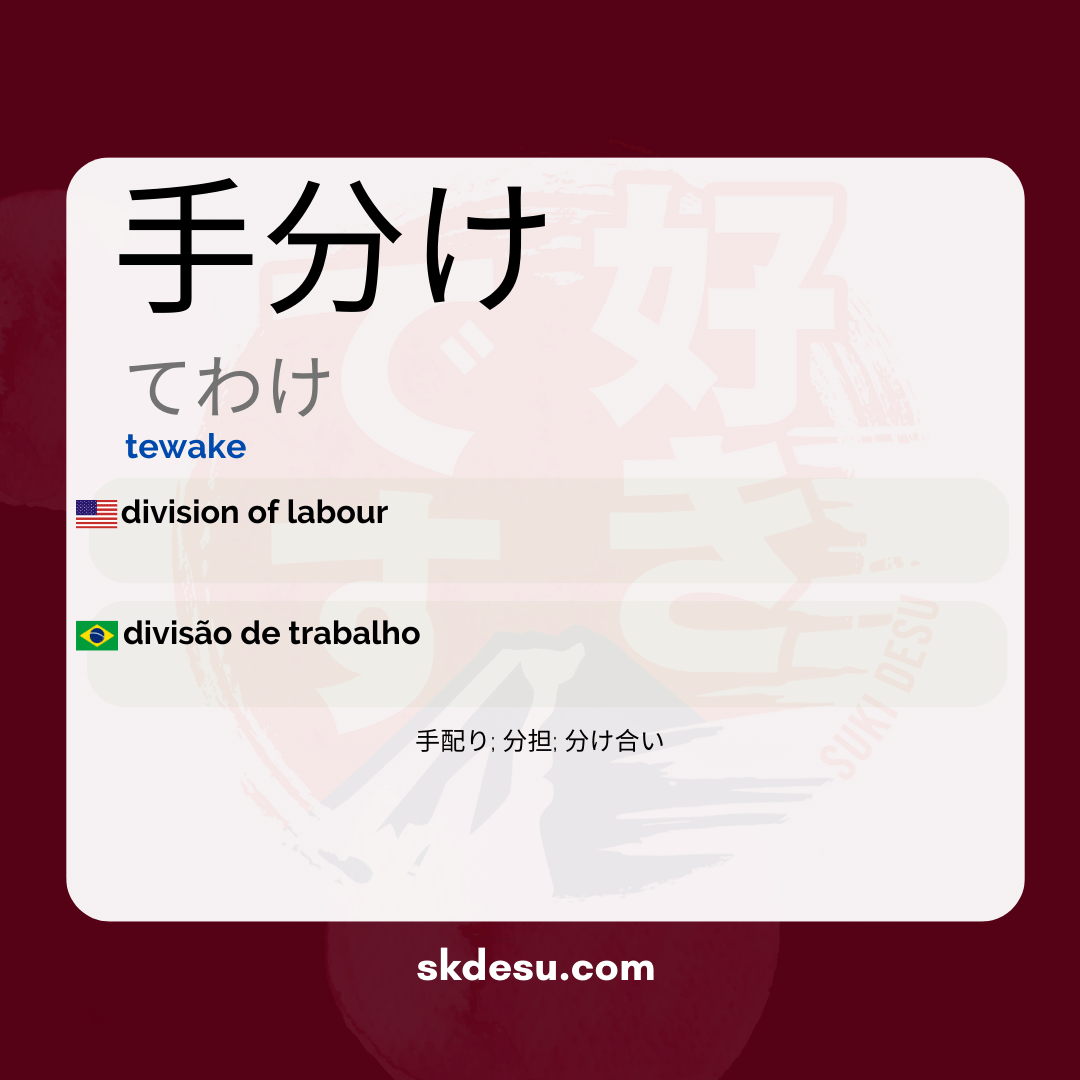Translation and Meaning of: 手分け - tewake
The Japanese word 手分け (てわけ, tewake) is a practical and useful term in everyday life, especially concerning organization and division of tasks. If you have ever wondered how the Japanese handle the efficient distribution of work or responsibilities, this term is the key to understanding part of that dynamic. In this article, we will explore its meaning, origin, and use in different contexts, as well as tips for memorizing it effectively.
In the Suki Nihongo dictionary, 手分け is defined as the action of dividing tasks among several people to accomplish something more quickly or in an organized manner. Whether in professional, domestic, or even collaborative project environments, this expression reflects an important cultural aspect in Japan: the appreciation of teamwork. Let's explore how it is applied in daily life and why it deserves the attention of those studying the language.
Meaning and usage of 手分け
The term 手分け is composed of the kanjis 手 (hand) and 分け (division), literally suggesting "to divide hands" — that is, to distribute efforts. It is often used in situations where several people come together to complete a task more quickly. For example, in an office, one might say: "Let's divide this work to finish it."
Unlike words like 分担 (buntan), which also means "division of tasks," 手分け has a more colloquial and immediate tone. While 分担 is common in formal or long-term contexts, 手分け appears more in everyday conversations, especially when the action is being done at that moment. This nuance is essential to avoid confusion when using the term.
Origin and components of kanji
The etymology of 手分け traces back to the Edo period, when collective organization was essential in villages and communities. The kanji 手, in addition to meaning "hand", symbolizes action or direct participation. On the other hand, 分け comes from the verb 分ける (wakeru), which indicates to separate or distribute. Together, they convey an idea of practical cooperation.
It is worth noting that 手分け does not have significant alternative readings or dialectal variations. Its pronunciation is uniform throughout Japan, which facilitates learning. Although it is less common than synonyms like 分担, its simplicity makes it an accessible option for Japanese learners, especially in informal situations.
Tips to memorize and use 手分け
An effective way to memorize 手分け is to associate it with everyday situations. Imagine friends organizing an event: "手分けして準備しよう" (Let's split up the preparations). This type of context helps to internalize the term. Another tip is to create flashcards with practical examples, highlighting the kanji 手 as an indicator of physical action.
Curiously, 手分け does not appear frequently in animes or dramas, but it is widely used in educational materials and management manuals. Its cultural value is tied to Japanese efficiency, making it relevant for those who want to understand not only the language but also the mentality behind it. How about practicing today?
Vocabulary
Expand your vocabulary with related words:
Synonyms and similar words
- 手配り (tebukuri) - Distribution, preparation; it can refer to carefully or thoughtfully distributing something.
- 分担 (buntan) - Division of responsibilities; refers to sharing tasks among people, emphasizing individual accountability.
- 分け合い (wakeai) - Division and sharing; it highlights the act of dividing something among people, emphasizing the idea of "sharing" in a more equitable way.
Related words
Romaji: tewake
Kana: てわけ
Type: noun
L: jlpt-n1
Translation / Meaning: division of work
Meaning in English: division of labour
Definition: The work is shared by several people.
Quick Access
- Vocabulary
- Writing
- Sentences
How to Write in Japanese - (手分け) tewake
See below a step-by-step guide on how to write the word by hand in Japanese. (手分け) tewake:
Example Sentences - (手分け) tewake
See below some example sentences:
Nenhum resultado encontrado.
Other Words of this Type: noun
See other words from our dictionary that are also: noun

